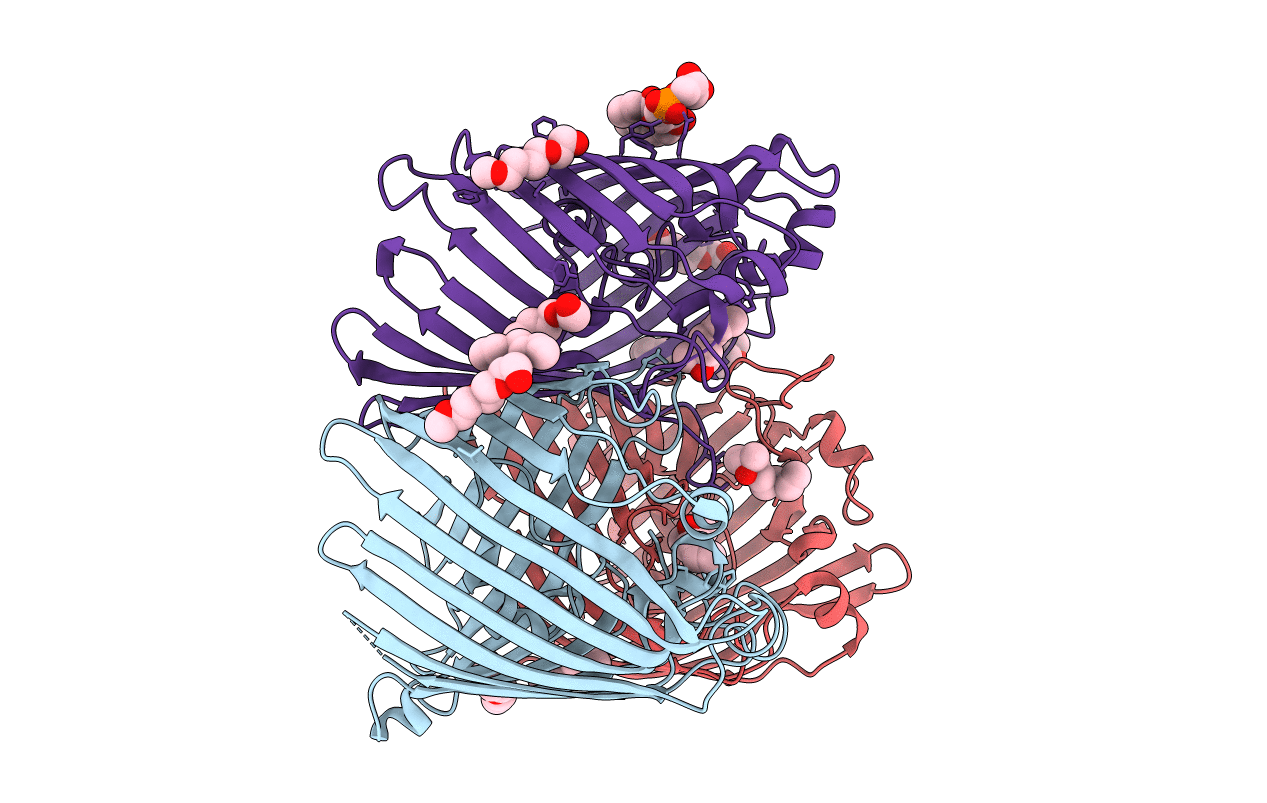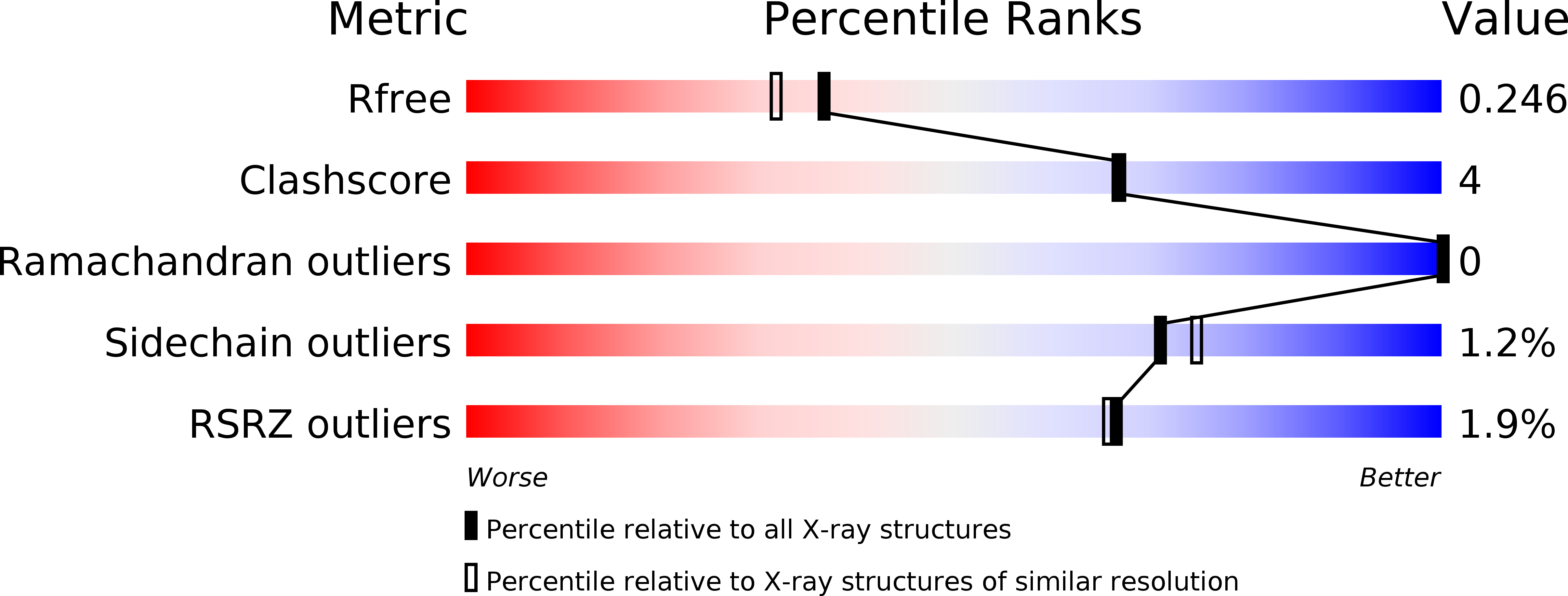
Deposition Date
2019-04-11
Release Date
2019-09-11
Last Version Date
2024-01-24
Entry Detail
PDB ID:
6RCK
Keywords:
Title:
Crystal structure of the OmpK36 GD insertion chimera from Klebsiella pneumonia
Biological Source:
Source Organism:
Klebsiella pneumoniae (Taxon ID: 573)
Host Organism:
Method Details:
Experimental Method:
Resolution:
2.03 Å
R-Value Free:
0.24
R-Value Work:
0.20
R-Value Observed:
0.20
Space Group:
C 1 2 1


